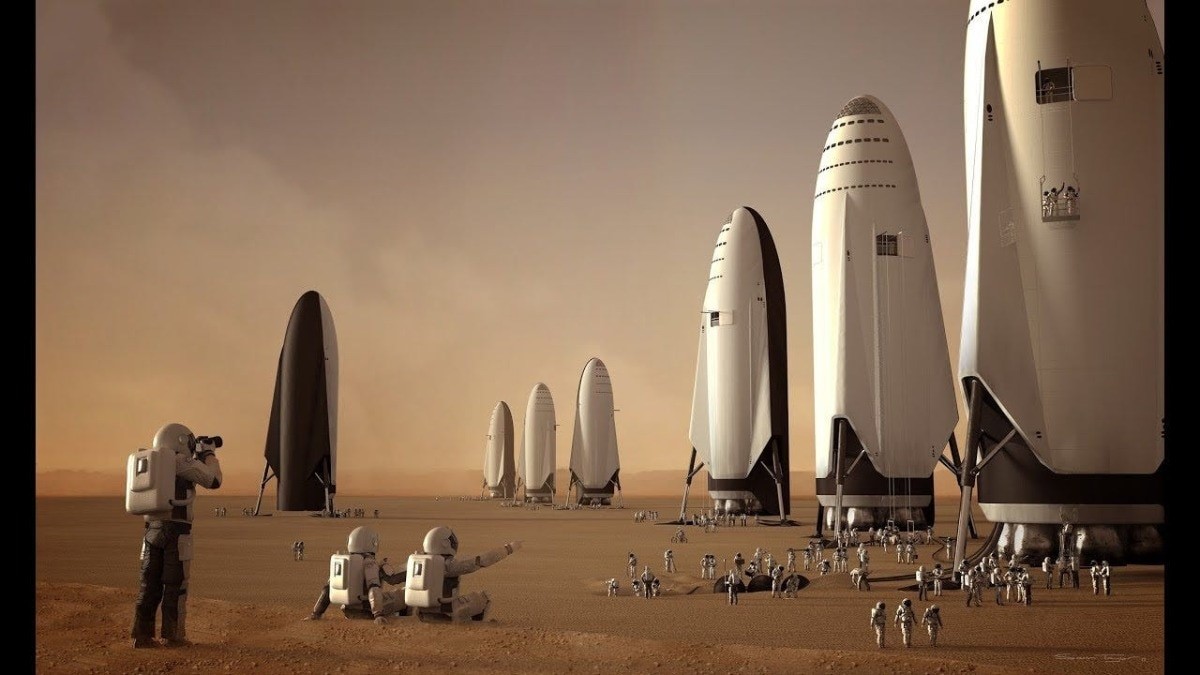SpaceX’s Mars Mission: Current Status, Challenges, and Future Prospects
Syllabus:
GS – 3- Science and Technology in the field of Space technology
Focus :
This article examines SpaceX’s Mars mission, highlighting the current status, projected timelines, technical challenges such as in-space refueling, potential conflicts of interest involving Elon Musk’s roles, and concerns raised by NASA scientists. It underscores the complexities and considerations inherent in private sector-led interplanetary exploration.
Introduction
- SpaceX, under the leadership of CEO Elon Musk, has set forth an ambitious vision to make humanity a multi-planetary species by establishing a sustainable presence on Mars.
- This article delves into the current status of SpaceX’s Mars mission, outlines the projected timelines for uncrewed and crewed missions, examines the technical and logistical challenges involved, discusses the feasibility of in-space refueling, addresses potential conflicts of interest concerning Musk’s roles, and explores concerns raised by NASA scientists.
Current Status of SpaceX’s Mars Mission
- Uncrewed Missions Timeline: Elon Musk has announced that SpaceX plans to launch its first uncrewed Starship missions to Mars in 2026.
- These missions aim to test and ensure the reliability of landing intact on the Martian surface.
- If successful, they will lay the groundwork for subsequent crewed missions.
- Crewed Missions Timeline: Following the uncrewed missions, Musk envisions initiating crewed flights to Mars approximately two years later, around 2028.
- This timeline aligns with the Earth-Mars transfer windows, which occur approximately every 26 months, providing optimal conditions for interplanetary travel.
Technical and Logistical Challenges
- Spacecraft Development and Testing: The Starship vehicle, designed for deep space missions, has undergone multiple test flights. However, several of these tests have resulted in failures, including critical test flight crashes.
- These setbacks underscore the challenges inherent in developing a reliable spacecraft capable of withstanding the rigors of interplanetary travel.
- In-Space Refueling: A significant hurdle for the Mars mission is the development of in-space refueling capabilities.
- To reach Mars, Starship requires a substantial amount of propellant. SpaceX plans to launch tanker spacecraft to refuel Starship in Earth’s orbit before it embarks on the journey to Mars.
- This complex process involves multiple launches and precise docking maneuvers, which have yet to be demonstrated successfully.
- Launch Windows and Timing: Mars missions are constrained by specific launch windows that occur every 26 months when Earth and Mars are optimally aligned.
- Missing these windows can result in significant delays, pushing missions back by over two years.
- Therefore, adhering to the projected timelines is critical for mission success.
Feasibility of In-Space Refueling
- Technical Considerations: In-space refueling involves transferring cryogenic propellants between docked spacecraft in microgravity.
- This process requires advanced technology to manage fluid dynamics, thermal insulation, and precise control systems to prevent fuel loss and ensure safety.
- Operational Challenges: Coordinating multiple launches to deploy the necessary tanker spacecraft and executing complex docking procedures within tight timeframes adds layers of complexity.
- Any delays or failures in this sequence could jeopardize the mission schedule and success.
Potential Conflicts of Interest
- Elon Musk’s Dual Roles: Elon Musk’s involvement with various governmental advisory bodies, including the Department of Governmental Agency (DOGE), has raised concerns about potential conflicts of interest.
- Reports suggest that DOGE has advocated for federal budget cuts affecting NASA’s programs, potentially redirecting funds toward SpaceX initiatives.
- This dual role of Musk as both a government adviser and a private contractor has led to scrutiny regarding the impartial allocation of resources and priorities within the space exploration sector.
Concerns Among NASA Scientists
- Budgetary Implications: NASA officials have expressed apprehension that budget cuts influenced by advisory bodies like DOGE could impact critical NASA programs.
- The potential reallocation of funds to private enterprises like SpaceX may undermine NASA’s objectives and its ability to conduct independent research and missions.
- Safety and Oversight: There are concerns regarding the safety protocols and oversight mechanisms in place for missions led by private companies.
- Ensuring that SpaceX adheres to rigorous safety standards is paramount, especially given the high stakes of interplanetary missions.
Conclusion
- SpaceX’s endeavor to reach Mars represents a monumental step in human space exploration, marked by ambitious goals and formidable challenges.
- While the proposed timelines reflect Musk’s vision for rapid advancement, the technical, logistical, and political hurdles cannot be understated.
- Addressing these challenges requires meticulous planning, robust testing, transparent governance, and collaborative efforts between private enterprises and governmental agencies to ensure the safe and successful realization of interplanetary missions.
Associated Article
https://universalinstitutions.com/spacex-crew-dragon-successfully-rescues-astronauts-from-orbit/
Mains UPSC Question GS 3
“Discuss the challenges and implications of private sector-led interplanetary missions, with a focus on SpaceX’s Mars mission. Consider technical, logistical, and ethical aspects, as well as the role of governmental oversight.”(250 words).




